Home>diy>Architecture & Design>How To Design My House Interior
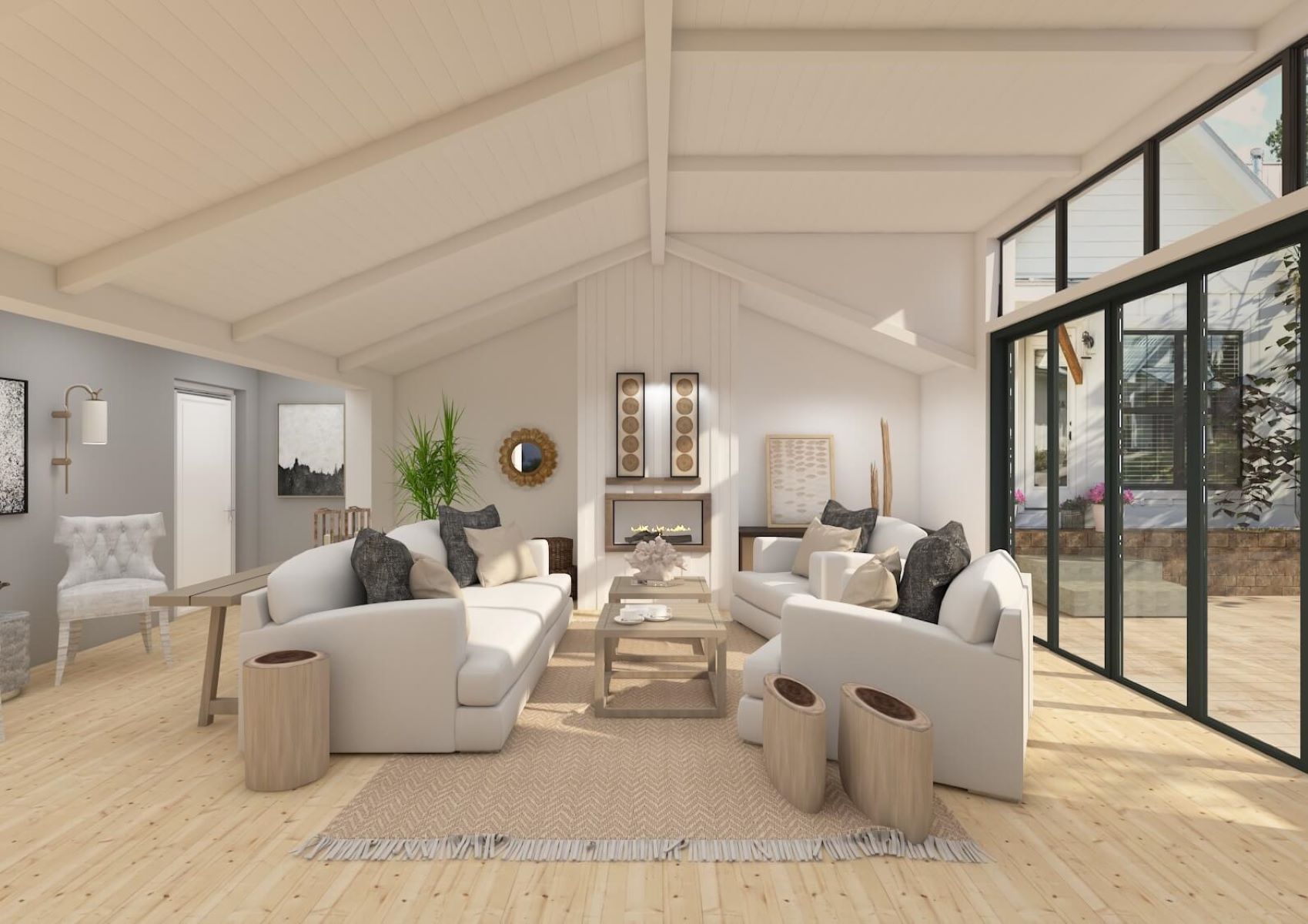

Architecture & Design
How To Design My House Interior
Modified: January 6, 2024
Learn how to design your house interior with expert tips and ideas. Discover the latest trends and techniques in architecture design to create your dream home.
(Many of the links in this article redirect to a specific reviewed product. Your purchase of these products through affiliate links helps to generate commission for Storables.com, at no extra cost. Learn more)
Introduction
Welcome to the world of interior design! Whether you’re remodeling your existing house or designing a new one from scratch, creating a well-designed and visually appealing interior space is crucial. Your house is not just a place to live; it’s a reflection of your personality and style. The interior design of your home can greatly impact your daily life, influencing your mood, productivity, and overall well-being.
In this article, we will explore the step-by-step process of designing your house’s interior. From assessing your design needs to selecting furniture and decorations, we will cover all the essential aspects to help you create a space that perfectly suits your preferences and lifestyle.
Before diving into the exciting world of interior design, it’s important to keep in mind that the process can be both challenging and rewarding. It requires careful planning, attention to detail, and a good understanding of your personal style. However, with the right guidance and resources, you can transform your house into a stunning, functional, and comfortable home that you will love spending time in.
Throughout this article, we will provide valuable insights, tips, and recommendations on various aspects of interior design, including assessing your design needs, setting your budget, understanding your personal style, determining the layout, choosing colors and materials, selecting furniture and decorations, lighting design, window treatments, flooring options, wall decor and paintings, arranging and organizing spaces, incorporating storage solutions, creating a focal point, adding personal touches, and whether to hire professionals or DIY.
So, let’s dive into the world of interior design and create a space that truly reflects your style and enhances your everyday life!
Key Takeaways:
- Designing your house’s interior is a personal journey that reflects your style and lifestyle. Incorporate personal touches, hire professionals for complex tasks, and enjoy the process to create a space that truly feels like home.
- Balancing time, expertise, and budget is crucial when deciding between hiring professionals or taking a DIY approach. Consider your vision, project scope, and personal satisfaction to make the best choice for your interior design endeavor.
Assessing Your Design Needs
Before embarking on any interior design project, it’s important to assess your design needs and goals. Take a step back and evaluate the function and purpose of each room in your house. Consider the activities that will take place in each space and the specific requirements you have.
Start by making a list of the rooms you want to design or remodel. Think about how you will use each space – will it be a bedroom, a home office, a kitchen, a living room, or a combination of functions? Consider the number of people who will use the room and their specific needs. For example, if you have children, you may need to prioritize durability and safety in your design choices.
Once you have identified the rooms and their purposes, think about the overall style and atmosphere you want to create. Do you lean towards a modern and minimalist look, or are you more drawn to a traditional and cozy feel? Consider your personal preferences and the architectural style of your house. It’s important to ensure that the design of each room is cohesive with the overall aesthetic of your home.
In addition to the function and style, consider any specific design challenges or constraints you may have. Are there any structural limitations or existing features that need to be taken into account? Think about how natural light enters each room and how it can be maximized or managed. Consider any special considerations, such as accessibility requirements or the need for pet-friendly design solutions.
Lastly, think about your timeline and budget. Determine how much time and money you are willing to invest in the project. This will help guide your decisions and prioritize your design choices. It’s important to have a realistic understanding of your limitations and work within them to avoid any unnecessary stress or financial strain.
By assessing your design needs thoroughly, you will have a clear understanding of what you want to achieve with your interior design project. This will serve as a solid foundation for the rest of the design process, allowing you to make informed decisions and create a space that meets your needs and exceeds your expectations.
Setting Your Budget
Setting a budget is a crucial step in any interior design project. It helps you understand your financial constraints and guides your decision-making process throughout the design process. By establishing a budget, you can prioritize your expenses and make sure you allocate funds wisely.
Start by determining how much money you are willing to invest in your interior design project. Consider your overall financial situation and ensure that you set a realistic budget that aligns with your financial goals. It’s important to strike a balance between investing in quality materials and furnishings and staying within your means.
Once you have set your budget, break it down into different categories based on the rooms you plan to design or remodel. Allocate a specific amount of money to each room so that you have a clear idea of how much you can spend on furniture, decorations, materials, and any professional services you might need.
Research and price out the items and services you will need for your project. Get quotes from contractors, furniture stores, and suppliers to get an accurate estimate of the costs involved. Be sure to consider any additional expenses such as delivery fees, installation costs, and taxes.
Be mindful of potential unexpected expenses that may arise during the project. It’s always a good idea to set aside a contingency fund to cover any unforeseen circumstances or changes that may occur. This will help you avoid any financial stress or delays in the project.
While it can be tempting to go overboard with your spending, it’s important to stay disciplined and stick to your budget. Prioritize your expenses based on your needs and allocate funds accordingly. Consider where you can save money without compromising on quality, such as opting for more affordable but durable materials or shopping for furniture and decor during sales or clearance events.
Remember, setting a budget doesn’t mean you have to sacrifice style or creativity. There are plenty of affordable options available that can still help you achieve the look you desire. It’s all about making smart choices and being resourceful.
Throughout the design process, keep track of your expenses and adjust your budget as needed. Be flexible and open to making adjustments if necessary. By sticking to your budget, you can create a beautiful and functional space without breaking the bank.
Setting a budget is an essential step in the interior design process. It will help you make informed decisions, stay organized, and ensure that your project stays on track financially. So take the time to plan your budget carefully and enjoy the process of designing your dream home within your means.
Understanding Your Personal Style
When it comes to designing your house’s interior, understanding your personal style is essential. Your personal style is a reflection of your preferences, personality, and lifestyle, and it plays a crucial role in creating a space that feels like home.
Start by exploring different design styles and aesthetics to get a sense of what resonates with you. Browse through magazines, websites, and social media platforms to gather inspiration and create mood boards. Pay attention to the colors, patterns, materials, and overall vibe that appeal to you.
Consider the architectural style of your house and how you can harmonize it with your personal style. For example, if you have a contemporary-style home, you may lean towards a modern or minimalist interior design. On the other hand, if you have a historic or traditional-style house, you might opt for more classic and timeless design elements.
Think about how you want your space to feel. Do you prefer a cozy and warm atmosphere, or do you lean towards a more open and airy layout? Consider the emotions and moods that different colors and textures evoke. This will help guide your choices when it comes to selecting paint colors, fabrics, and materials.
Consider the functionality of each room and how it aligns with your personal style. For example, if you love to cook, your kitchen design should prioritize functionality and efficiency. If you enjoy hosting gatherings, your living room should be designed to accommodate large seating areas and conversational spaces.
Take inventory of your existing furniture and belongings and determine what items you want to keep, modify, or replace. This will give you a sense of your existing style and help you determine how to blend it with your desired aesthetic. Consider repurposing or upcycling items to add a unique touch to your design.
Remember, your personal style is not limited to one specific design trend. It’s a combination of different influences that make your space feel like you. Don’t be afraid to mix and match styles, colors, and textures to create a space that reflects your individuality.
Finally, keep in mind that your personal style may evolve over time. As you grow and change, your design preferences may shift as well. Embrace this evolution and be open to experimenting with different styles and ideas.
Understanding your personal style is a key step in the interior design process. It allows you to create a space that feels authentic and resonates with your unique taste and personality. So take the time to explore and define your personal style, and let it guide you in creating a home interior that you will love for years to come.
Determining the Layout
Determining the layout of your house’s interior is a critical step that sets the foundation for a functional and well-designed space. The layout determines how the rooms will flow and interact with each other, optimizing the use of your available square footage.
Start by measuring the dimensions of each room and sketching out a rough floor plan. Consider the existing architectural elements, such as windows, doors, and structural columns, and factor them into your design. This will help you identify any limitations or opportunities for creative design solutions.
Think about the main activities that will take place in each room and prioritize their positioning. For example, in the living room, the seating area should be the focal point, while in the kitchen, the workspace and appliances should be easily accessible.
Consider the traffic flow within each room and between rooms. Ensure that there are clear pathways and that furniture placement does not obstruct movement. Think about how people will move through the space and aim for a layout that promotes ease of circulation.
When designing the layout, pay attention to the concept of “zones.” Divide your rooms into functional zones that cater to different activities. For example, in an open-concept living and dining area, you may have a seating zone, a dining zone, and a media zone. This helps define the purpose of each area and gives a sense of organization to the overall space.
Consider the balance between open space and furniture placement. Leave enough room for movement and create breathing space between furniture pieces. This prevents the room from feeling cramped and cluttered.
Think about the orientation of major elements, such as the placement of windows and sources of natural light. Maximize the use of natural light by positioning furniture and functional areas accordingly. Additionally, consider the placement of electrical outlets and ensure they are conveniently located for your needs.
Don’t be afraid to experiment with different layout options. Sketch out multiple versions and consider the pros and cons of each. Visualize how the layout will look and function in real life and make adjustments as needed. You may also consider using online design tools or consulting with a professional interior designer to get a fresh perspective.
Ultimately, the layout should be tailored to your specific needs and the unique characteristics of your space. It should promote functionality, flow, and comfort. By carefully determining the layout, you can create an interior that is not only visually pleasing but also highly practical and conducive to your everyday activities.
Read more: How To Design The Interior Of A House
Choosing Colors and Materials
Choosing colors and materials is a crucial aspect of designing your house’s interior. The colors you select and the materials you use greatly influence the overall aesthetic and atmosphere of your space. It’s important to choose colors and materials that not only reflect your personal style but also enhance the functionality and mood of each room.
Start by considering the mood you want to create in each room. Colors have the power to evoke specific emotions and set the tone for the space. For example, cool tones like blues and greens can create a calming and relaxing atmosphere, while warm tones like reds and oranges can add energy and warmth.
Take into account the natural lighting conditions of each room. If a room receives an abundance of natural light, you may want to choose lighter and softer colors to enhance the brightness. In contrast, if a room lacks natural light, you can opt for warmer and richer tones to add depth and coziness.
Consider the size of the room as well. Lighter colors can make small rooms appear larger and more spacious, while darker colors can create a sense of intimacy in larger rooms.
When selecting materials, consider both their aesthetic appeal and their practicality. For example, in high-traffic areas like the entryway or kitchen, choose durable and easy-to-clean materials that can withstand frequent use. In bedrooms and living areas, prioritize comfort by selecting soft fabrics and cozy textures.
Pay attention to the overall style you want to achieve and select materials that align with that aesthetic. For example, if you’re going for a modern look, consider materials like glass, metal, and sleek finishes. If you prefer a more rustic and natural style, opt for materials like wood, stone, and earthy textures.
Consider the purpose of each room and choose materials accordingly. For example, in the bathroom, select moisture-resistant materials that can withstand humidity. In the dining room, choose materials that are easy to clean in case of spills.
Don’t be afraid to mix and match colors and materials to create an interesting and visually appealing space. Experiment with different combinations and textures to add depth and dimension. Consider incorporating patterns and textures to add visual interest and personality to your rooms.
When in doubt, it’s always helpful to create a mood board or gather samples of colors and materials you’re considering. This will allow you to visualize how they will look together and make informed decisions.
Remember, choosing colors and materials should be a reflection of your personal style and preferences. It’s your opportunity to add your unique touch to your space. So take your time, explore different options, and select colors and materials that truly resonate with you.
Selecting Furniture and Decorations
When designing your house’s interior, selecting furniture and decorations is an exciting and essential part of the process. Furniture and decor pieces not only enhance the functionality of your space but also add personality and style. Here are some tips to help you choose the right furniture and decorations for your home.
Start by assessing the needs of each room and the specific functions you want to accommodate. Consider the size of the room and the available space, as well as the furniture pieces you already have or plan to keep. Take measurements to ensure that the furniture you choose fits appropriately and allows for comfortable movement within the room.
Consider the overall style and aesthetic you want to achieve. Select furniture and decorations that align with your personal taste and the architectural style of your home. Whether you prefer sleek and modern, cozy and traditional, or a mix of styles, choose pieces that complement each other and create a cohesive look.
When it comes to furniture, prioritize comfort and quality. Invest in well-made, durable pieces that will stand the test of time. Consider the materials used, the construction, and the upholstery, ensuring that they are both aesthetically pleasing and functional.
Think about the specific needs and lifestyle of your household. If you have children or pets, choose furniture that is easy to clean and durable. If you frequently entertain guests, consider extra seating options and versatile pieces that can be rearranged.
Don’t be afraid to mix and match different furniture styles and textures. Combine different materials, such as wood, metal, and upholstery, to add visual interest. Experiment with contrasting colors and patterns to create a statement piece or a focal point in the room.
When selecting decorations, consider the theme and color palette of the room. Choose pieces that complement the overall design and add personality. Decorative items such as artwork, mirrors, rugs, and plants can enhance the style and ambiance of your space.
Take into account the scale and proportion of the room when selecting decorations. Choose pieces that are proportionate to the size of the room and the furniture. Oversized decorations can overwhelm a small space, while small decorations can get lost in a large room.
Consider incorporating personal touches and sentimental items into your design. Display items that have meaning to you or tell a story, such as family heirlooms or travel souvenirs. These personal touches add a layer of uniqueness and warmth to your home.
Lastly, be mindful of your budget when selecting furniture and decorations. Prioritize your purchases and consider shopping during sales or exploring second-hand options, such as vintage or antique stores. Remember, creating a beautiful and inviting space doesn’t have to break the bank.
Selecting furniture and decorations is an opportunity to infuse your personal style and creativity into your space. Take your time, do your research, and enjoy the process of curating a home that reflects your personality and provides comfort and functionality.
Lighting Design
Lighting is a key element in interior design, as it greatly impacts the mood, functionality, and overall aesthetics of a space. Proper lighting design can enhance the atmosphere, highlight architectural features, and provide task-specific illumination. Here are some important considerations when it comes to lighting design for your house’s interior.
Start by analyzing the natural light sources in each room. Take note of the orientation of windows and how sunlight enters the space at different times of the day. Utilize and maximize natural light whenever possible, as it creates a warm and inviting atmosphere.
Supplement natural light with artificial lighting to create a well-balanced and layered lighting scheme. There are three main types of lighting you should consider: ambient, task, and accent lighting.
Ambient lighting provides overall illumination and sets the general mood of a room. It can be achieved through various fixtures, such as chandeliers, recessed lights, or wall-mounted sconces. Consider the size and layout of each room when determining the number and placement of ambient lights.
Task lighting is focused illumination that provides light for specific activities or tasks, such as reading, cooking, or working. It can be achieved with desk lamps, under-cabinet lights, or pendant lights. Identify the areas in each room that require task lighting and select fixtures that offer the appropriate brightness and directionality.
Accent lighting adds visual interest and highlights specific features or objects in a room, such as artwork, architectural elements, or decorative items. It can be achieved through spotlights, track lights, or picture lights. Use accent lighting strategically to create focal points and draw attention to specific areas of interest.
Consider the color temperature and intensity of the light bulbs you use. Warm white light (around 2700-3000 kelvin) creates a cozy and intimate ambiance, while cool white light (around 4000-5000 kelvin) provides a more energetic and vibrant atmosphere. Use dimmers to have control over the brightness of your lights, allowing you to adjust the lighting levels according to the desired mood and activity.
Pay attention to the placement of lighting fixtures. Consider the height of ceilings, the size of the room, and the purpose of the lighting. Ensure that the fixtures are not obstructed and that light is evenly distributed. Properly position task lighting to prevent glare or shadows on work surfaces.
In addition to functionality, consider the aesthetics of lighting fixtures. Select fixtures that complement the style of your home and enhance the overall design. Light fixtures can be statement pieces that add a touch of personality and sophistication to your space.
Lastly, don’t forget about energy efficiency. Opt for LED bulbs, which are long-lasting and energy-efficient compared to traditional incandescent bulbs. They may have a higher upfront cost but will save you money in the long run on energy bills and replacement bulbs.
Lighting design is an integral part of creating a well-designed and inviting interior space. By considering the different types of lighting, selecting appropriate fixtures, and paying attention to placement, you can create a harmonious and visually stunning environment that meets both your functional and aesthetic needs.
Window Treatments
Window treatments are an essential element of interior design that not only provide privacy and light control but also add style and character to your space. By carefully selecting and installing window treatments, you can enhance the overall aesthetics and functionality of your house’s interior. Here are some key considerations when it comes to window treatments:
Start by assessing the needs of each room in terms of privacy, light filtering, and insulation. Determine the level of privacy you desire and how much natural light you want to allow into the room. Consider the orientation of the windows and the amount of sunlight that enters at different times of the day.
There are various types of window treatments to choose from, including curtains, blinds, shades, and shutters. Each option offers different levels of light control, privacy, and style. Consider the overall theme and design of your space when selecting the type of window treatment.
Curtains and drapes are a popular choice, as they come in a range of colors, patterns, and textures. They can be made from light and sheer fabrics for a soft and airy look, or from heavier materials for a more dramatic and cozy feel. Choose curtains that complement the style of your room and enhance the overall aesthetic.
Blinds provide adjustable light control and privacy. They can be tilted to allow natural light in while maintaining privacy or fully closed for complete privacy. Blinds come in different materials, such as wood, metal, or synthetic materials, to suit different design preferences.
Shades offer a range of options, from sheer to opaque, and provide varying levels of light filtration and privacy. They can be roller shades, Roman shades, or cellular shades. Consider their functionality, material, and style when selecting the right shades for your windows.
Shutters are a timeless and classic window treatment option. They can be interior shutters or exterior shutters, depending on the design and architectural features of your home. Shutters provide excellent light control, privacy, and insulation.
Consider the fabric or material of the window treatments and their impact on energy efficiency. Some fabrics offer better insulation, which can help regulate the temperature of your rooms. This is especially important for windows that receive a lot of direct sunlight or are located in areas with extreme weather conditions.
Paying attention to the size and placement of window treatments is vital. Select the appropriate size and length of curtains or blinds to fit your windows. Ensure that they are well-proportioned to the window, neither overwhelming nor underwhelming the space. Proper installation and positioning of window treatments can visually heighten windows and add elegance to the room.
Lastly, don’t forget about the hardware and accessories for your window treatments. Select curtain rods, finials, and tiebacks that complement your chosen window treatments and enhance the overall style of the room.
Window treatments can significantly impact the look and feel of your space. By selecting the right type, fabric, and style, you can create a harmonious and functional environment that adds warmth, privacy, and a touch of elegance to your house’s interior.
When designing your house interior, consider the flow of natural light and how it will affect the colors and layout of your space. This will help create a harmonious and inviting atmosphere.
Read more: How Long To Interior Design A House
Flooring Options
Choosing the right flooring is an important decision when designing your house’s interior. The type of flooring you select not only affects the overall appearance of the space but also plays a significant role in the comfort, functionality, and maintenance of your home. Here are some popular flooring options to consider:
Hardwood flooring is a timeless and popular choice that adds warmth and character to any room. It comes in various types of wood, such as oak, maple, or walnut, each with its unique grain and color. Hardwood floors are durable, easy to clean, and can be refinished to restore their original luster.
Laminate flooring is a cost-effective alternative to hardwood that mimics the look of natural wood. It is made from composite materials and has a photographic layer that replicates the appearance of wood. Laminate flooring is durable, scratch-resistant, and easy to install.
Tile flooring, such as ceramic or porcelain, is known for its durability and versatility. It is available in a wide range of colors, patterns, and textures. Tile is ideal for areas prone to moisture, such as kitchens and bathrooms, as it is water-resistant and easy to clean.
Carpet is a comfortable and cozy flooring option that adds warmth and texture to a space. It comes in different styles, pile heights, and patterns. Carpet is great for bedrooms, living rooms, or areas where you want added comfort underfoot. However, it may require more maintenance and can be prone to stains and wear over time.
Vinyl flooring offers a budget-friendly and durable option for various areas in your home. It is versatile, water-resistant, and available in a wide array of colors and styles, including designs that mimic hardwood or tile. Vinyl flooring is easy to install and maintain, making it suitable for high-traffic areas.
Concrete flooring is a modern and industrial choice that has gained popularity in contemporary design. It can be polished or stained to achieve different looks and finishes. Concrete is durable, low-maintenance, and suitable for both indoor and outdoor spaces.
Consider the specific needs of each room and your lifestyle when selecting flooring. For example, high-traffic areas may warrant durable materials like hardwood or tile, while areas where comfort is a priority may benefit from carpet or vinyl.
Take into account the design aesthetic you want to achieve. Some flooring options, like hardwood or tile, offer timeless appeal and can complement various styles, while others, like concrete, add a modern and industrial touch.
Think about the overall color palette and how the flooring will coordinate with the walls, furniture, and other elements in the room. Lighter flooring can make a space appear bigger and brighter, while darker flooring can add a sense of sophistication and coziness.
Lastly, weigh the maintenance requirements and longevity of each flooring option. Some materials may require regular sealing or refinishing, while others are more low-maintenance. Consider your willingness to invest time and effort into cleaning and maintaining the floors.
Choosing the right flooring is a crucial element in the overall design of your home. By considering factors such as durability, style, maintenance, and functionality, you can select the flooring option that best suits your needs and enhances the beauty and functionality of your house’s interior.
Wall Decor and Paintings
Wall decor and paintings are the finishing touches that bring life and personality to your house’s interior. They are an opportunity to showcase your artistic taste, express your individuality, and create focal points in the rooms. Here are some tips for selecting and displaying wall decor and paintings:
Consider the overall style and theme of the room when selecting wall decor. It should complement the existing design elements and contribute to the desired atmosphere. For example, in a modern and minimalist space, choose abstract or geometric art pieces, while in a more traditional room, consider landscapes or still-life paintings.
Think about the size and scale of the wall decor or paintings in relation to the wall itself and the surrounding furniture. The artwork should be proportionate to the space and not overwhelm or appear too small. As a general rule, large walls can accommodate bigger artwork, while smaller walls may benefit from a gallery-style arrangement of smaller pieces.
Consider the color palette of the room and select wall decor and paintings that harmonize or provide a contrasting pop of color. Artwork can tie together different elements in the room, such as furniture, curtains, or accent pieces. Use color to create visual interest and enhance the overall aesthetic.
Mix and match different types of wall decor, such as paintings, prints, photographs, or wall sculptures. This adds depth and texture to the walls and creates a more dynamic and visually appealing display. Consider using various frames, materials, or arrangements to create an eclectic and personalized look.
When arranging multiple pieces of wall decor, consider the balance and visual flow. Create a cohesive display by paying attention to the spacing between each piece and the overall composition. Experiment with different layouts, such as symmetrical or asymmetrical arrangements, to find the arrangement that works best for your space.
If you prefer a more minimalist look, consider selecting a few statement pieces or a single large-scale artwork. This creates a focal point and allows the artwork to truly shine. In smaller spaces, a single striking piece can make a significant impact without overwhelming the room.
Utilize different wall surfaces for displaying wall decor. Consider hanging artwork on a gallery wall, leaning large paintings against the wall, or using floating shelves or wall-mounted displays to showcase smaller pieces. This adds dimension and enhances the visual interest of the room.
Don’t limit your wall decor options to just paintings or prints. Explore other creative ideas, such as wall decals, tapestries, mirrors, or even a collection of meaningful objects or souvenirs. The key is to create a display that reflects your personality and tells a story.
Consider the lighting around your wall decor and paintings. Proper lighting enhances the visibility and impact of the artwork. Install adjustable spotlights or picture lights to highlight the artwork and create a focal point.
Finally, take the time to appreciate and enjoy the art pieces you choose. Art is meant to evoke emotions and inspire. It serves as a reflection of your taste and passion, so select pieces that resonate with you on a personal level.
Wall decor and paintings have the power to transform a space and make it uniquely yours. By carefully selecting and arranging artwork, you can create a visually stunning and meaningful display that adds character, depth, and inspiration to your house’s interior.
Arranging and Organizing Spaces
Arranging and organizing your house’s interior spaces is essential for creating a functional, visually pleasing, and clutter-free environment. Whether you’re designing a new home or revamping an existing space, a well-organized layout can greatly enhance your daily life. Here are some tips to help you arrange and organize your spaces effectively:
Start by assessing the specific function and purpose of each room. Consider the activities that will take place in the space and prioritize their arrangement accordingly. For example, in a living room, the seating area should be the focal point, while in a bedroom, the bed and storage solutions should be the main focus.
Consider the flow and circulation within each room. Ensure that there are clear pathways and that furniture placement does not hinder movement. Allow enough space between furniture pieces for comfortable movement and interaction.
Utilize the principle of visual balance and proportion when arranging furniture. Distribute the weight of furniture evenly throughout the room to create a sense of equilibrium. Avoid overcrowding one area and leaving other parts of the room empty. Consider the scale of furniture in relation to the size of the room to maintain a harmonious composition.
Consider the placement of key functional elements, such as electrical outlets, light switches, and HVAC vents. Make sure furniture and decorations do not obstruct or interfere with these essential components. This will ensure convenience and practicality in your everyday activities.
Pay attention to the focal points in each room and arrange the furniture and decorations to highlight them. In the living room, for example, the seating area should be oriented towards the fireplace or a stunning view. By emphasizing the focal points, you create visual interest and draw attention to the unique features of the space.
Maximize storage solutions to reduce clutter and maintain an organized environment. Utilize built-in shelves, cabinets, or storage furniture to tuck away personal items and keep surfaces clean. Consider implementing creative storage solutions, such as storage ottomans or under-bed storage, to optimize space utilization.
Use rugs and floor coverings to anchor furniture arrangements and define different functional zones within a room. Rugs not only add warmth and texture to a space but also help create visual boundaries and delineate different areas.
Consider incorporating multi-functional furniture pieces for added versatility. For example, opt for a sofa bed in the guest room to double as a seating area and a sleeping space. Look for coffee tables or ottomans with hidden storage compartments. This allows you to maximize the functionality of your furniture and optimize your use of space.
Prioritize a clutter-free environment by regularly decluttering and organizing your belongings. Avoid excessive decorative items or unnecessary furniture that can contribute to visual clutter. Embrace a minimalist approach that focuses on the essentials and promotes a sense of calm and serenity.
Lastly, implement strategies to maintain the organized layout. Develop routines for tidying up, allocate specific places for everyday items, and encourage family members to contribute to the organization efforts. Regular maintenance and keeping systems in place will ensure that your well-arranged spaces remain organized over time.
Arranging and organizing spaces is an ongoing process that requires intentionality and a keen eye for detail. By carefully considering the function, flow, and organization of each room, you can create an environment that promotes efficiency, comfort, and a sense of harmony in your house’s interior.
Incorporating Storage Solutions
Effective storage solutions are a crucial aspect of interior design, as they help maintain a clutter-free and organized living space. By incorporating thoughtful storage solutions, you can optimize the functionality of your house’s interior while enhancing its aesthetics. Here are some tips for incorporating storage solutions into your home:
Assess the specific storage needs and challenges of each room. Consider the items you need to store, whether it’s clothing, books, kitchenware, or toys. Take note of any unique storage requirements, such as bulkier items or specialized equipment.
Start by utilizing vertical space. Install shelves, cabinets, or bookcases on walls to take advantage of empty wall space and provide additional storage. This not only maximizes storage capacity but also adds visual interest and depth to the room.
Consider built-in storage options, such as custom closets, cabinets, or shelving units. Built-ins can be tailored to the specific dimensions of your space, allowing for efficient use of every nook and cranny. They seamlessly blend into the room, creating a cohesive and organized look.
Opt for multifunctional furniture pieces that offer built-in storage. Look for ottomans, coffee tables, or benches with hidden compartments for storing blankets, magazines, or toys. This allows you to maximize the functionality of your furniture without sacrificing space.
Maximize closet space by utilizing closet organizers, such as hanging shelves, shoe racks, or storage bins. This helps separate and categorize items, making it easier to find what you need. Consider adding hooks or hanging systems for additional storage options.
Implement storage solutions in the kitchen to keep it organized and efficient. Install pull-out drawers or shelves in cabinets to maximize space and allow for easy access to cookware and pantry items. Utilize vertical space with wall-mounted racks or magnetic strips for storing utensils or knives.
Don’t neglect underutilized areas, such as the space under the stairs or the back of doors. Incorporate custom storage solutions, such as built-in cabinets or shelves, to make the most of these overlooked spaces. They can serve as storage for shoes, coats, cleaning supplies, or even create a small home office.
Consider using storage bins, baskets, or decorative boxes to corral and organize smaller items. This not only keeps things neat but also adds a touch of style to your storage solutions. Labeling containers can further enhance organization and ensure items are easily accessible.
Utilize furniture with storage capabilities, such as beds with built-in drawers or ottomans that open up to reveal storage compartments. This allows you to make the most of limited space and keep your belongings neatly out of sight.
Think beyond traditional storage solutions and get creative. Use vertical hanging systems in the garage for tools and equipment, install overhead storage racks, or utilize wall-mounted pegboards for organizing tools and accessories.
Regularly declutter and reassess your storage needs. Donate or sell items that you no longer need or use to free up space and maintain an organized environment. Regular maintenance ensures that your storage solutions continue to serve their purpose effectively.
Incorporating storage solutions into your home is an investment in both practicality and aesthetics. By carefully considering your storage needs and utilizing a combination of built-ins, multifunctional furniture, and innovative solutions, you can create a well-organized and visually pleasing interior that enhances your daily life.
Creating a Focal Point
A focal point is a key element in interior design that draws attention and serves as a visual anchor in a room. It adds interest, personality, and balance to the space, becoming the center of attention. Creating a focal point allows you to highlight specific features, add drama or create a sense of harmony. Here are some tips for creating a focal point in your house’s interior:
Identify the focal point of the room. It can be an existing architectural feature, such as a fireplace, a large window with a beautiful view, or an exposed brick wall. If there is no natural focal point, you can create one by using design elements like artwork, accent walls, or a statement piece of furniture.
Consider the layout and flow of the room when determining the placement of the focal point. It should be positioned strategically to draw the eye and create balance. Centralizing the focal point within the room often works well, but you can also use asymmetry to create an unexpected focal point.
Use color to create a focal point. Consider painting a wall in a bold or contrasting color to make it stand out. This can be particularly effective when the rest of the room has a more neutral color palette. Alternatively, you can use furniture or decorative items in a vibrant hue to create a focal point.
Consider the scale and proportions of the focal point. Ensure that it is proportionate to the size of the room and the surrounding elements. For instance, a large painting on a small wall may overpower the space, while a small piece of art on a large wall might get lost. Aim for a balanced visual impact.
Lighting plays a crucial role in creating a focal point. Use spotlights, track lighting, or picture lights to highlight the focal point and create a sense of drama. Proper lighting draws attention to the element and enhances its impact.
Texture and material choices can also help create a focal point. Consider using textured wallpaper, a stone-clad fireplace, or a unique material like reclaimed wood as the focal point of the room. These elements add depth and visual interest.
Experiment with different patterns and prints to create a focal point. An accent wall with a bold wallpaper pattern or a rug with an eye-catching design can instantly become the center of attention.
Don’t be afraid to use artwork as a focal point. A large statement piece or a curated gallery wall can add personality and character to a room. Frame the artwork appropriately to elevate its visual impact and make it the focal point of the space.
Consider the focal point’s relationship with other elements in the room. It should complement the overall design and not compete with other focal points. For example, if you have a grand chandelier as a focal point in the dining room, keep the other elements more understated to avoid visual clutter.
Regularly reassess and update your focal point to keep the space fresh. As your design tastes evolve, you may want to change or swap out the focal point to create a new visual impact. This allows you to invigorate the space and keep it dynamic.
Creating a focal point adds visual interest, depth, and character to your house’s interior. Consider the existing features, use color and lighting strategically, and experiment with texture, pattern, and artwork. By creating a focal point, you will transform your space and give it a captivating and well-balanced appeal.
Adding Personal Touches
Adding personal touches to your house’s interior is essential for making it feel like a home. It’s the opportunity to infuse your unique personality, memories, and interests into the design. Personalized elements create a warm and inviting atmosphere that reflects your identity. Here are some tips for adding personal touches to your space:
Display cherished memories and meaningful items. Create a gallery wall with family photos, hang artwork created by loved ones, or showcase travel souvenirs and mementos. These objects tell a story and evoke emotions, creating a sense of nostalgia and connection.
Customize your space with artwork or prints that resonate with you. Choose pieces that speak to your interests, inspire you, or simply make you happy. Whether it’s a favorite artist or a piece that holds a personal meaning, artwork adds a personal touch and becomes a conversation starter.
Showcase your hobbies or collections. If you have a passion for music, display your instruments or vinyl record collection in a dedicated area. If you’re a book lover, create a cozy reading nook with bookshelves filled with your favorite reads. These touches not only reflect your interests but also make your space feel uniquely yours.
Incorporate textiles and fabrics that reflect your style. Use throw pillows, blankets, or curtains in colors and patterns that resonate with you. You can also choose fabrics that remind you of fond memories or places you’ve visited. By surrounding yourself with textiles you love, you create a comforting and personalized environment.
Install shelves or dedicated display areas to showcase your unique collections or hobbies. Whether it’s vintage cameras, LEGO sets, or sports memorabilia, create a dedicated space to showcase and celebrate your interests. This display becomes a focal point and adds a personal touch to your home.
Add elements that represent your cultural heritage or background. Incorporate traditional artwork, textiles, or decorative objects that reflect your cultural roots. These pieces not only add visual interest but also celebrate your heritage and create a sense of belonging.
Customize the lighting in your space to reflect your preferences. Use different light fixtures, such as floor lamps, pendant lights, or string lights to create ambiance. Adjust the lighting levels to match your mood and activities, whether it’s soft and cozy or bright and energizing.
Create a dedicated workspace or art corner that caters to your hobbies or creative pursuits. Set up a desk with materials that inspire your creativity, whether it’s paints, sketchbooks, or a sewing machine. Having a space that supports your interests encourages you to engage in activities that bring you joy.
Consider incorporating scents that evoke positive emotions or memories. Whether it’s scented candles, essential oils, or fresh flowers, fragrance can enhance the ambiance and create a sensory experience that is uniquely yours.
Embrace DIY projects and crafts to add personal touches to your home. Whether it’s upcycling furniture, creating your own artwork, or sewing custom curtains, DIY projects allow you to put your own stamp on your home. These handmade elements add uniqueness and a sense of accomplishment.
Remember, the most important aspect of adding personal touches is to choose what resonates with you. Your home should reflect your style, interests, and memories. By incorporating personal elements, you create a space that is not only visually appealing but also comforting, inspiring, and uniquely you.
Hiring Professionals or DIY
When it comes to designing your house’s interior, one important decision to make is whether to hire professionals or take the do-it-yourself (DIY) route. Both options have their benefits and considerations. Here are some factors to consider when deciding whether to hire professionals or tackle the project yourself:
Time and expertise: Professional designers and contractors bring their expertise and industry knowledge to the table. They have experience in space planning, material selection, and project management. Hiring professionals saves you time and ensures that the project is executed efficiently and effectively. DIY, on the other hand, allows you the freedom to work at your own pace and explore your creativity.
Design concept and vision: Professional designers can help you translate your ideas into a cohesive design concept. They have an eye for detail and can guide you in making informed decisions about color schemes, furniture arrangements, and overall aesthetics. If you have a specific vision in mind but lack the design skills, professionals can bring your ideas to life. DIY allows you the freedom to experiment and express your personal style without compromising on your vision.
Scope and complexity of the project: Consider the size and complexity of your interior design project. If it involves structural changes, electrical work, or plumbing modifications, it may be best to hire professionals who have the necessary expertise and knowledge to handle these tasks safely and efficiently. However, for smaller and less complex projects like painting or decorating, DIY can be a cost-effective and rewarding option.
Budget: Hiring professionals typically comes with a cost, including fees for design consultations, labor, and materials. If budget is a significant concern, DIY can help you save money. However, be mindful of the potential risks and additional expenses that can arise from mistakes or lack of experience. Ensure that you have a realistic understanding of your skill level and the time commitment required for the project.
Resources and connections: Professionals have access to a network of suppliers and contractors, which can streamline the process and provide you with a wider range of options. They can also help you navigate permits and regulations, ensuring that your project complies with building codes. DIY may require you to research and source materials and contractors yourself, which can be time-consuming and challenging.
Personal satisfaction: Consider your level of comfort, interest, and enthusiasm for the project. Some individuals find joy and fulfillment in taking on DIY projects and seeing their vision come to life. Others may prefer to rely on professionals and enjoy the convenience and expertise they provide. Consider your personal preferences and the level of involvement you desire throughout the process.
Ultimately, the decision to hire professionals or pursue a DIY approach depends on your specific needs, budget, expertise, and time availability. You can also consider a combination of both by hiring professionals for certain aspects of the project and taking on smaller tasks yourself. The key is to have a clear understanding of your limitations, objectives, and desired outcome, while allowing room for creativity and flexibility.
Regardless of the approach you choose, the goal is to create a space that reflects your style, functionality, and personal preferences. Whether you hire professionals or embark on a DIY journey, enjoy the process and take pride in the final result of your interior design endeavor.
Conclusion
Designing your house’s interior is an exciting and personal journey that allows you to create a space that truly reflects your style, personality, and lifestyle. It’s an opportunity to turn your house into a home, a place that not only looks beautiful but also feels comfortable and functional.
Throughout this article, we have explored various aspects of interior design, from assessing your design needs and setting a budget to understanding your personal style and incorporating storage solutions. We discussed the importance of creating a focal point, selecting colors and materials, and arranging and organizing spaces.
Adding personal touches and incorporating elements that hold meaning to you is what will truly transform your house into a home. Displaying cherished memories, showcasing hobbies, and infusing your personal style into the design all contribute to creating a space that is uniquely yours.
When it comes to executing your interior design project, you have the option to hire professionals or take a DIY approach. Consider factors such as time, expertise, budget, and the scope of the project to make the decision that best aligns with your needs and goals.
Remember, interior design is a dynamic and ongoing process. Your tastes may evolve, and your needs may change over time. Be open to exploring new ideas and adjusting your design choices to stay in tune with your lifestyle and preferences.
As you embark on your interior design journey, enjoy the process and have fun expressing your creativity. Let your imagination run wild and make choices that make you happy and comfortable in your space.
Ultimately, the goal is to create a home that brings you joy, reflects who you are, and serves as a sanctuary for everyday life. So go ahead, start planning, and embark on your interior design adventure. Your dream home awaits!
Frequently Asked Questions about How To Design My House Interior
Was this page helpful?
At Storables.com, we guarantee accurate and reliable information. Our content, validated by Expert Board Contributors, is crafted following stringent Editorial Policies. We're committed to providing you with well-researched, expert-backed insights for all your informational needs.
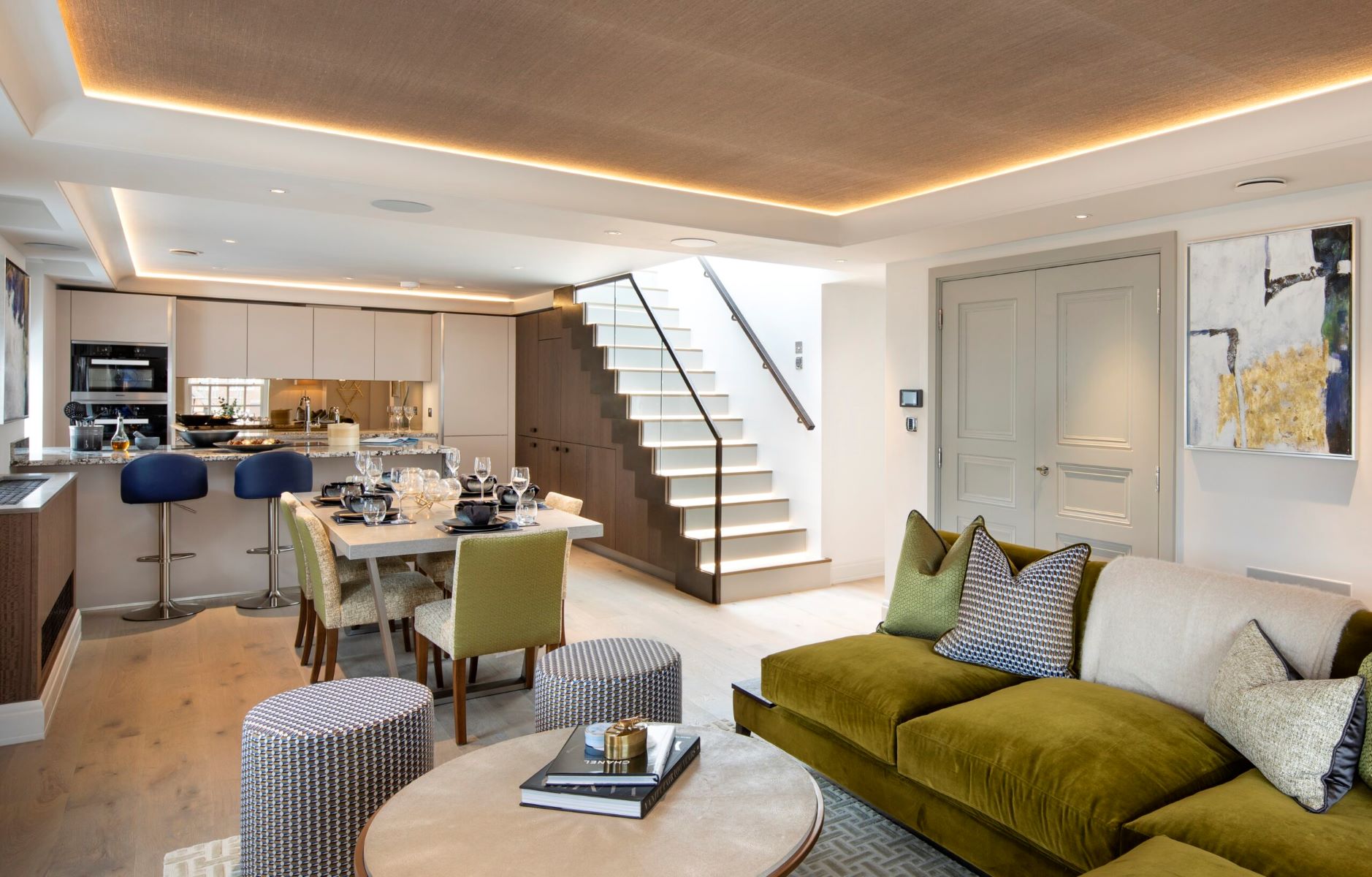
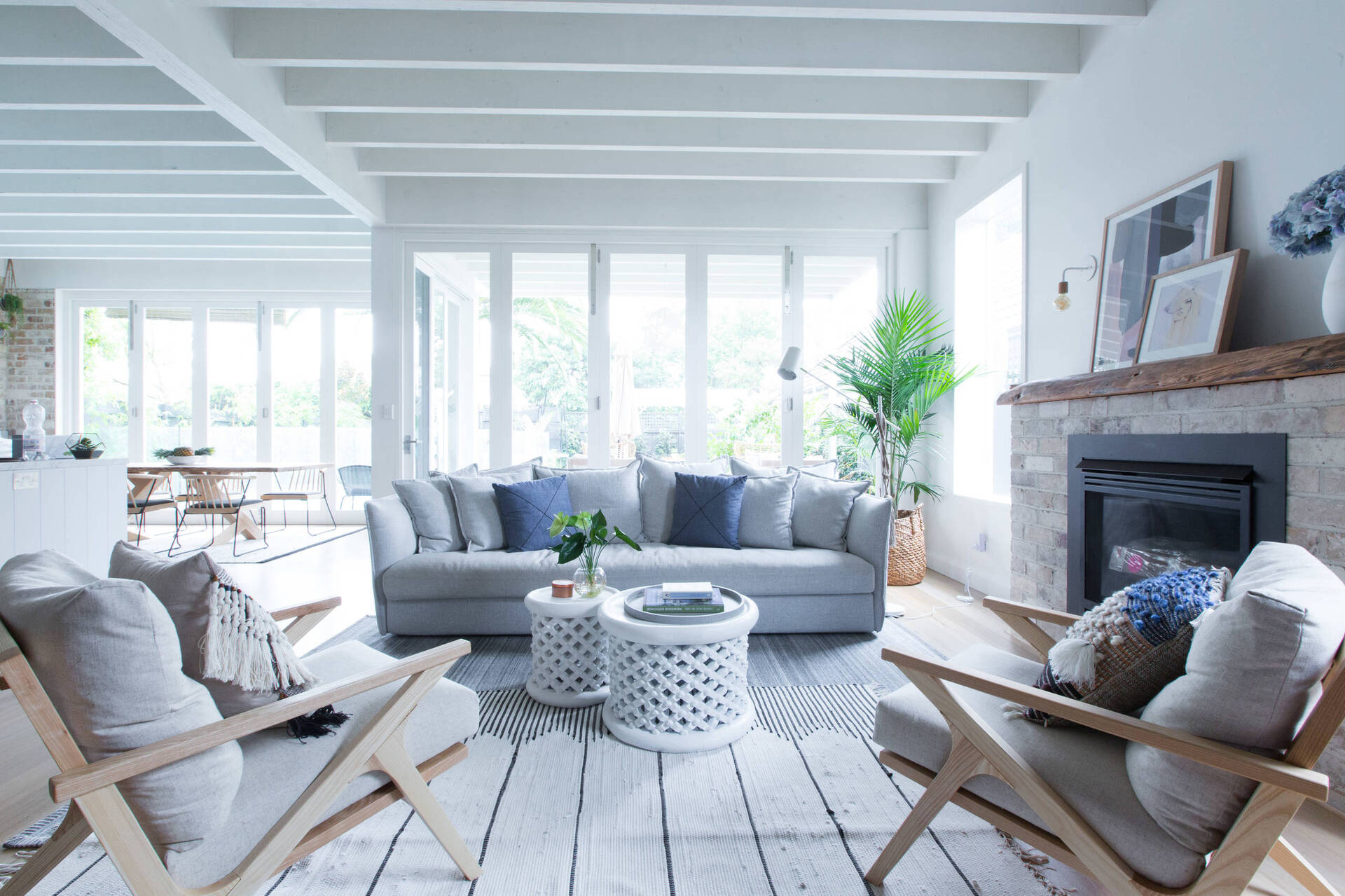
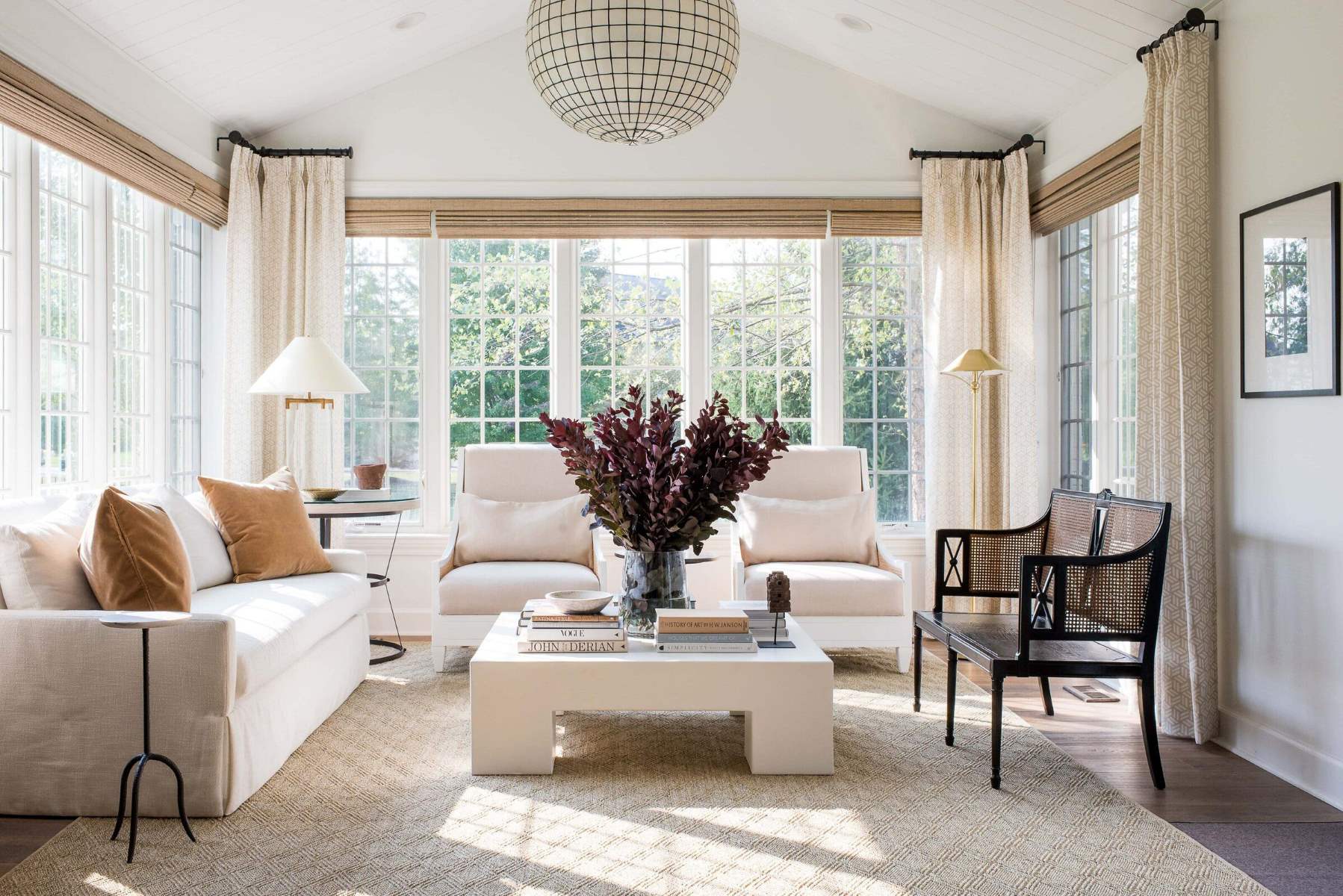
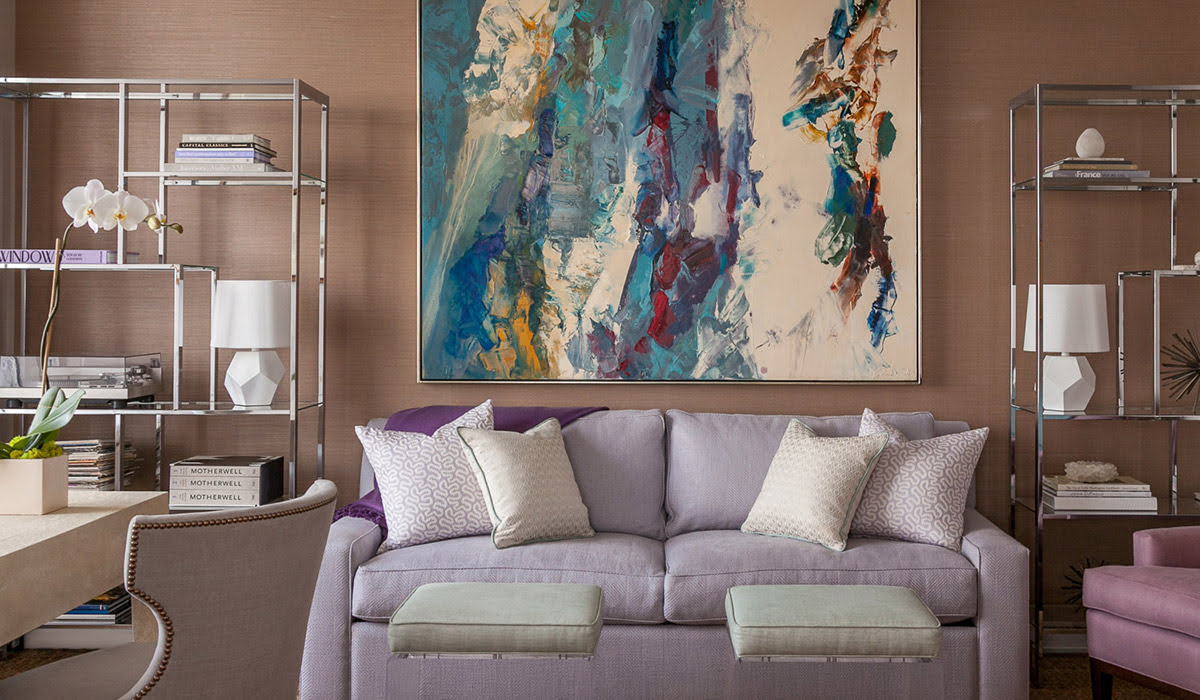
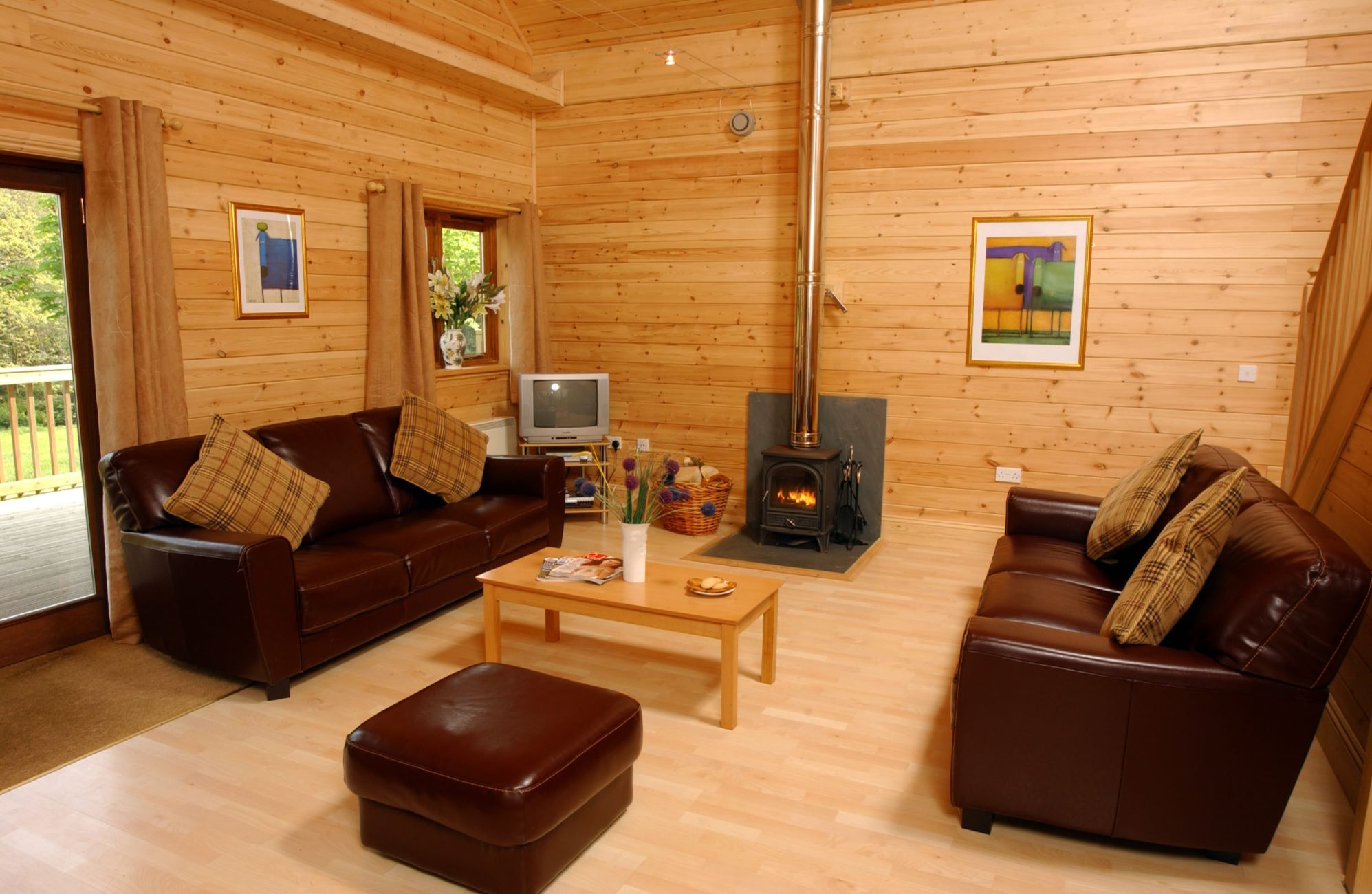
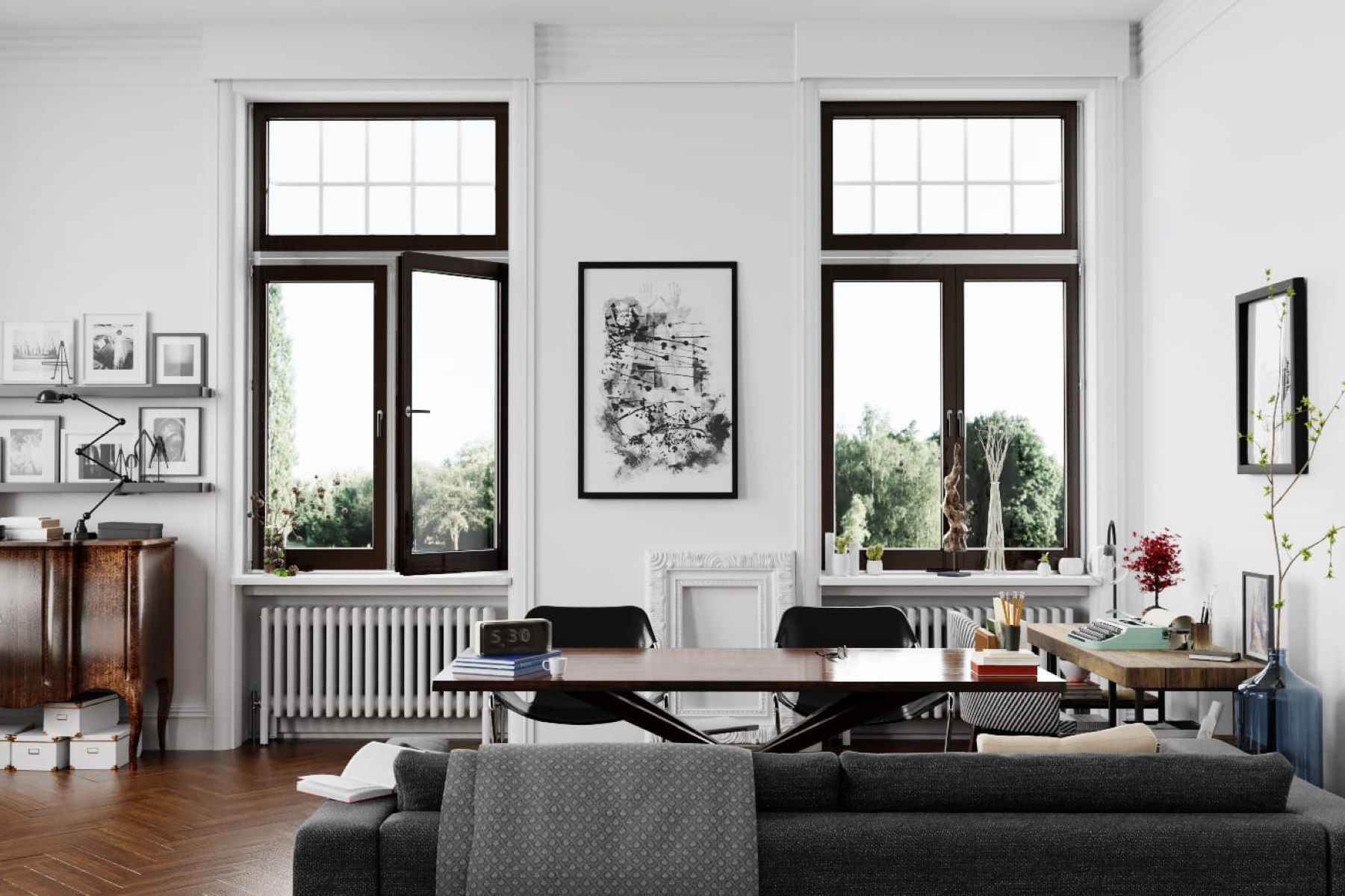
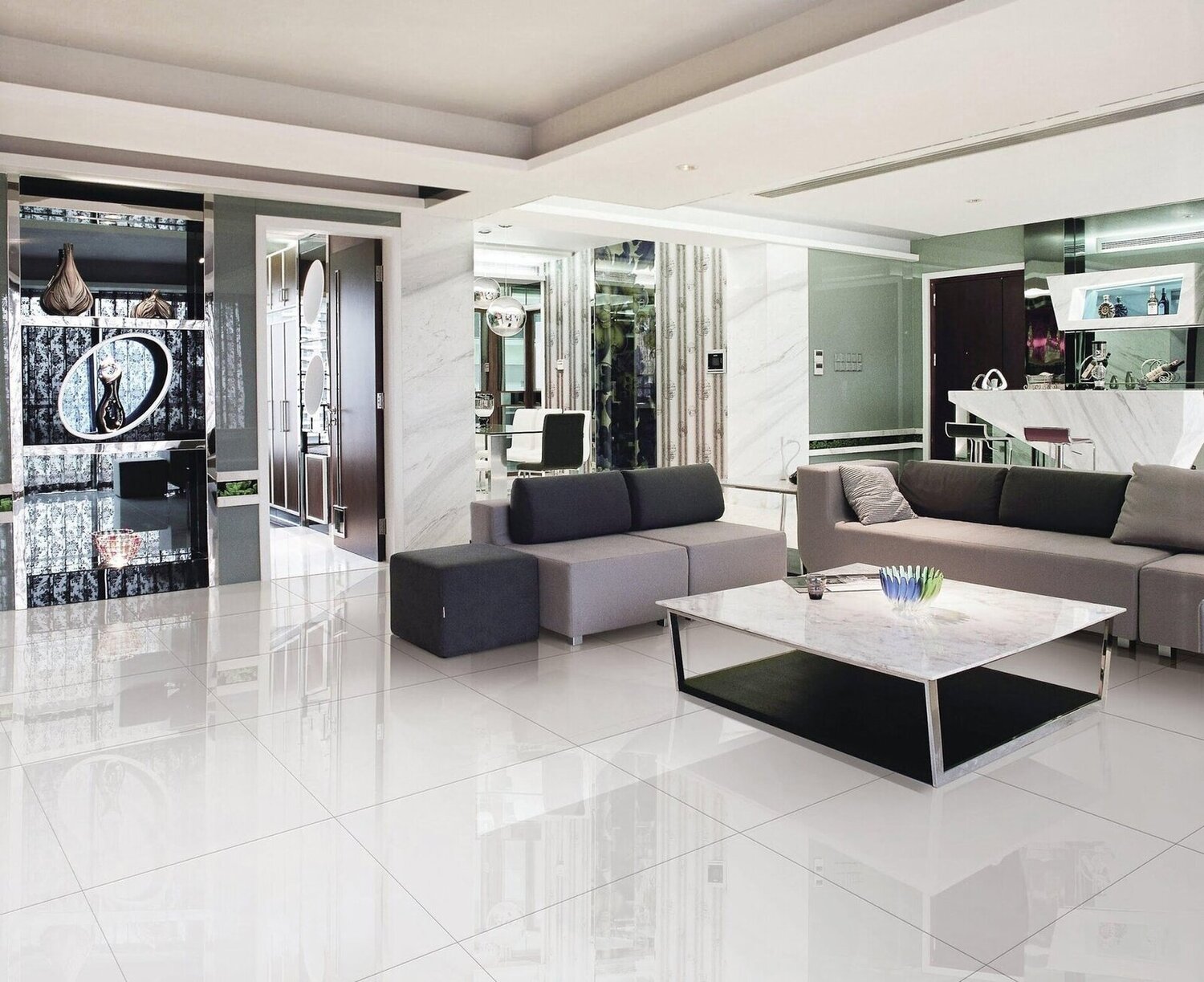
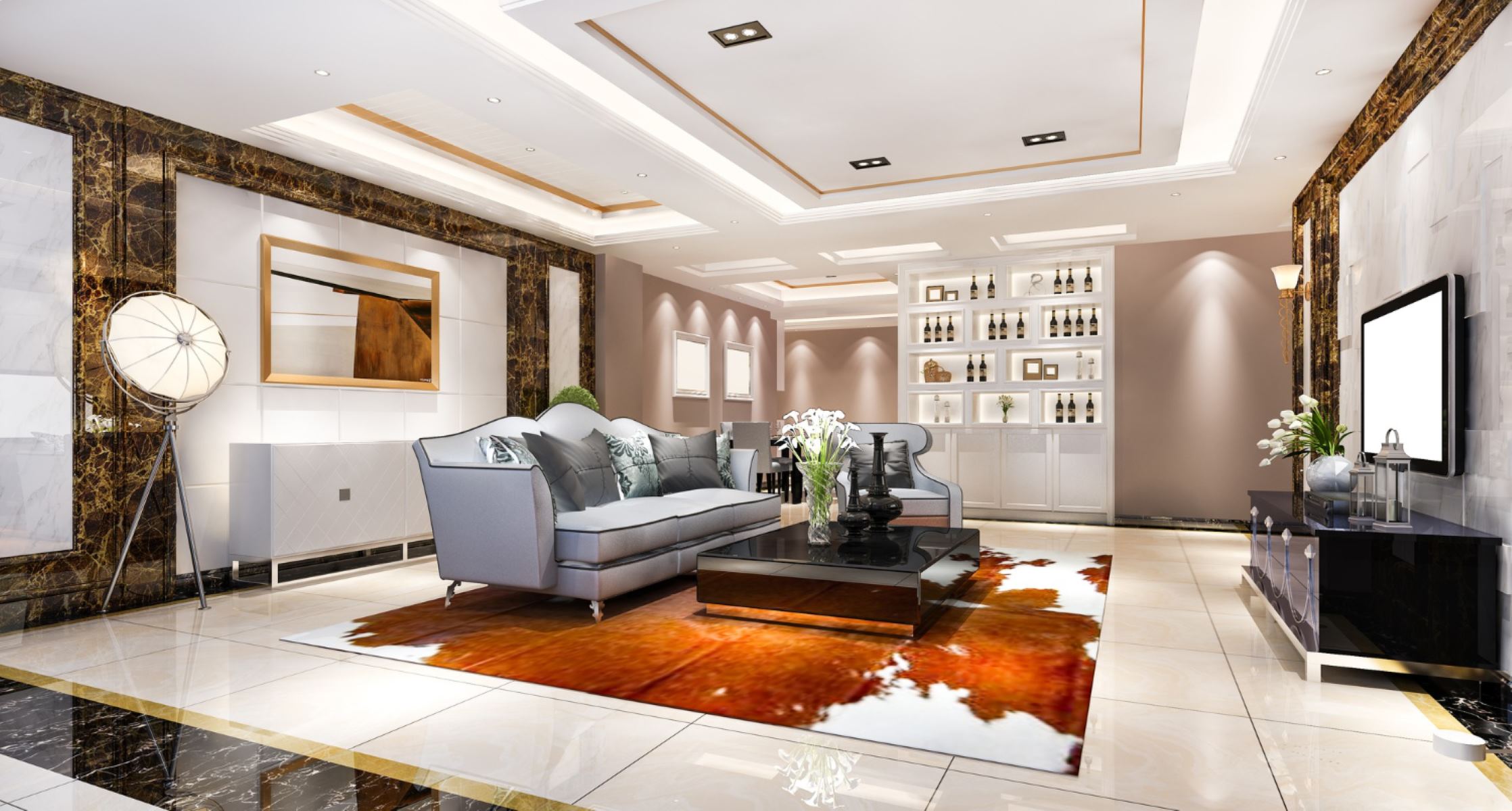
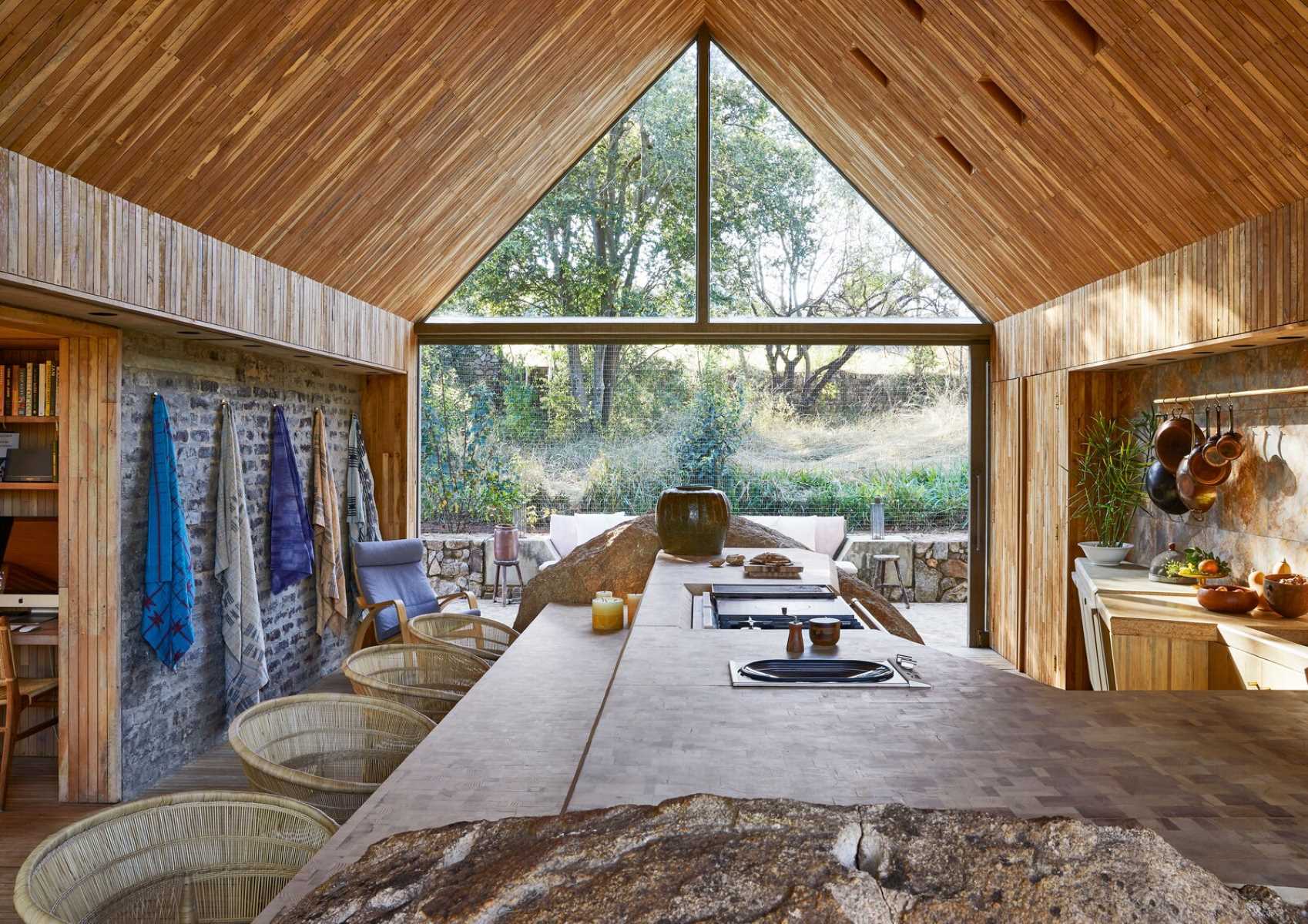
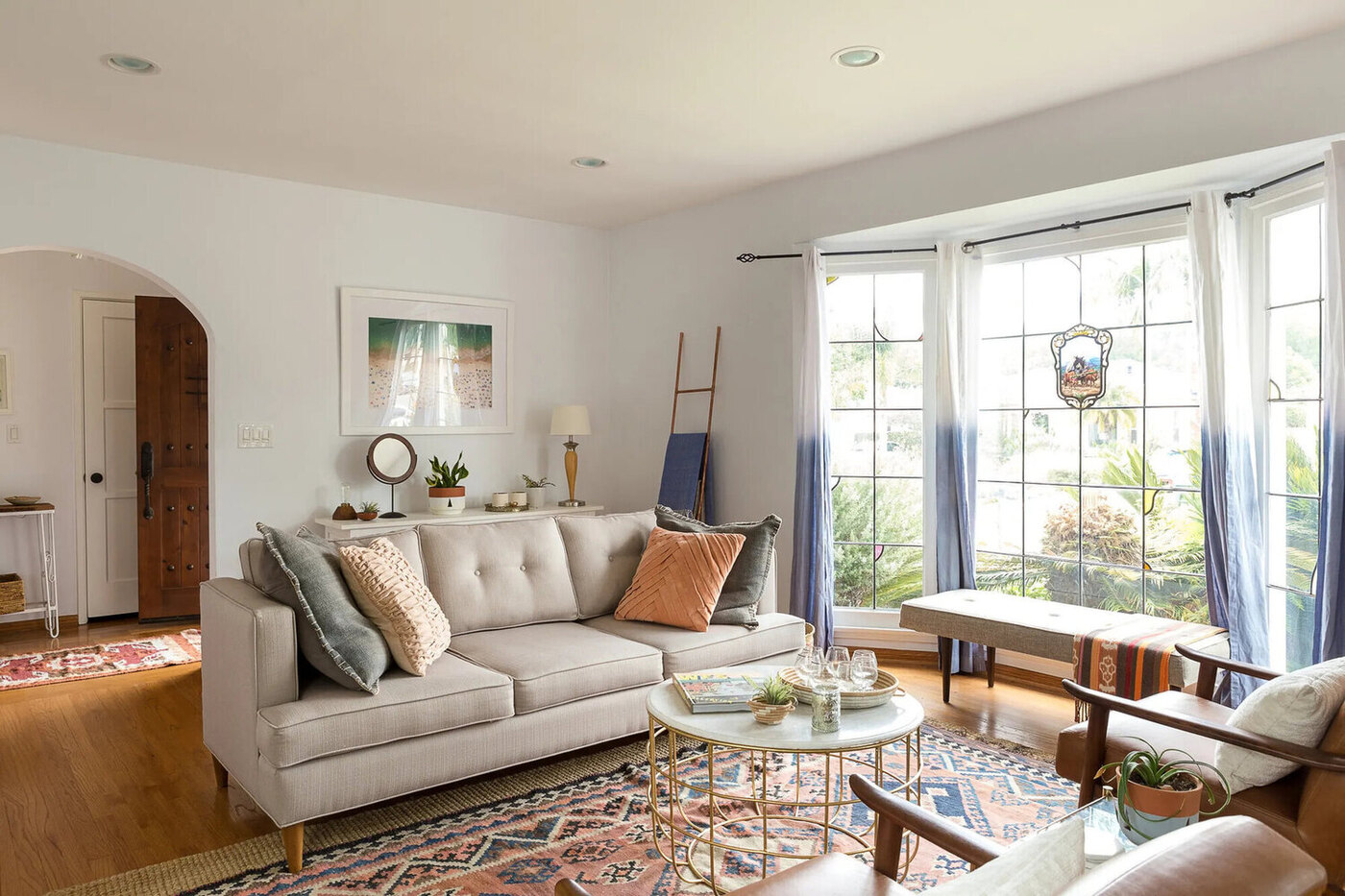
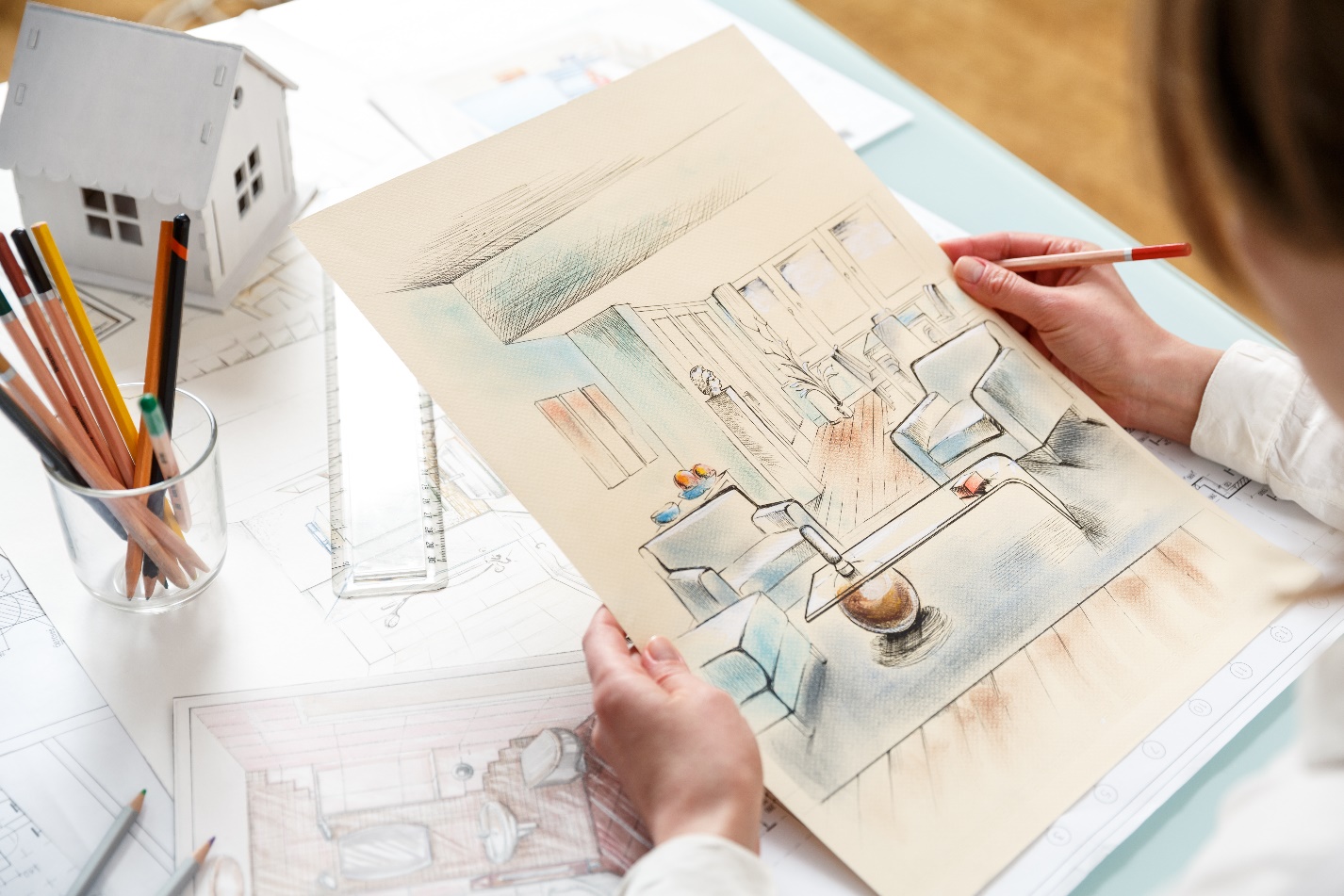
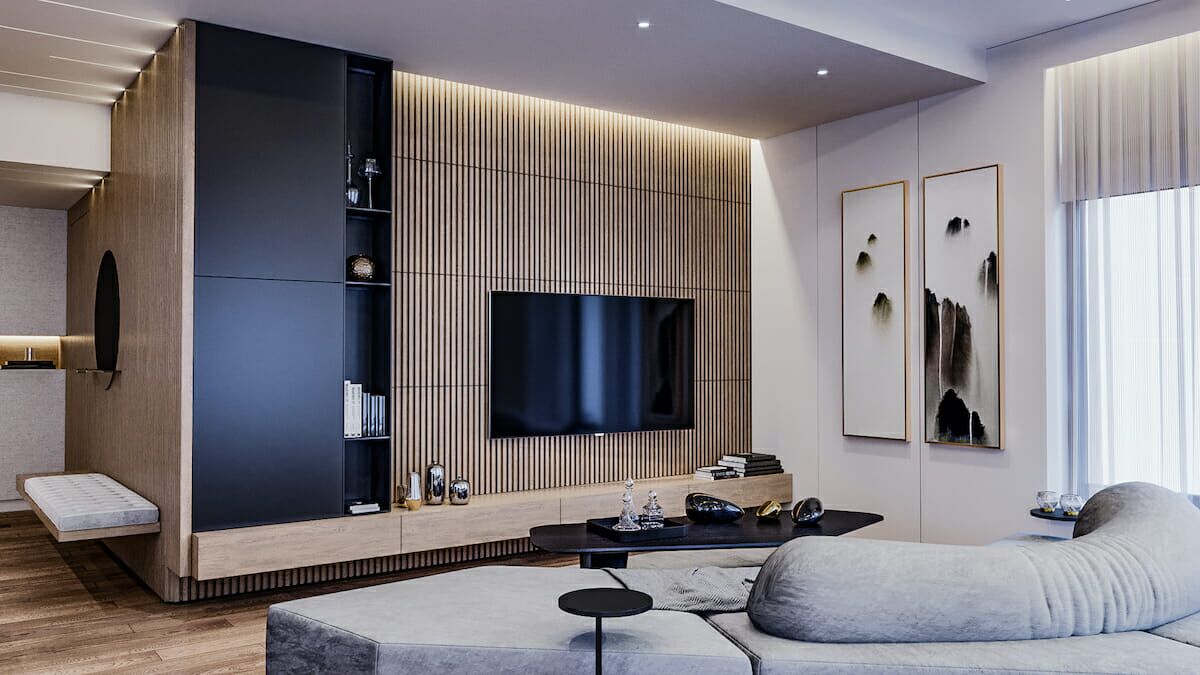

0 thoughts on “How To Design My House Interior”